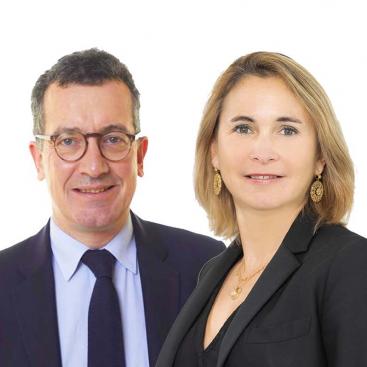Ideas

According to the United Nations, 55% of the world’s population now lives in cities, a rate that is expected to rise to 68% by 20501. Given this outlook, with nearly two billion people still without adequate housing2, and with greenhouse gas emissions from buildings accounting for about 20% of global emissions and 36% of European Union emissions3, building and renovating differently is a necessity. Buildings are a massive source of emission reductions: this has been well embedded in public policy, as demonstrated by Fit for 554, which raises the annual renovation target for buildings to 3%5, and provides for the creation of a sector-specific emissions trading scheme and an increase in the percentage of renewable energy used in buildings. Suzanne Senellart and Camille Barré explain how the Mirova Europe Environmental Equity Strategy6 contributes to the achievement of the Fit for 55 objectives, by investing in innovative solutions capable of meeting the challenges of the building sector, whether in terms of energy restraint, greenhouse gas emission reductions, materials used and their recycling, or preservation of biodiversity.

Forests cover almost a third of world land surface, on a decreasing trend as reforestation notably in the West and in Asia does not compensate local deforestation, in South America and Africa. But the rationale for forest expansion is strong, and developing wood-based productions can contribute to meeting some global challenges in various ways. In this context, properly designed and well managed forest plantations should be considered in impact-oriented investment universes, to support the development of a sustainable economy.

The time for all-out mobilisation For many decades now, we have been witnessing, year after year, an exacerbation of the consequences of climate change. Droughts, heat waves, heavy rain, flooding and landslides are all happening with increasing frequency. In parallel, rising sea levels and ocean acidification are continuing under the effects of global warming. We also know that climate change contributes to accelerating the disappearance of biodiversity which has already been endangered by human activity, independent of the climate. Drastic change has now become an urgent matter, both in power generation and in manufacturing processes and consumer habits. To make the current energy system compatible with the climate challenge, it is crucial to support the acceleration of the transition towards a zero carbon economy, and this mobilisation must happen across the board. Finance is no exception to the rule, and has a key role to play by leading a profound transformation in its capital allocation choices. Manuel Coeslier, Portfolio Manager for the Mirova Climate Ambition strategy1, and Ladislas Smia, Head of Sustainability Research, offer insight onto the widespread mobilisation that THE definitive challenge of the 21st century now requires.

Carbon neutrality, adaptation to climate change, preservation of biodiversity, and combating inequality: these are all complex and interconnected issues that need to be addressed in a holistic manner, rather than piecemeal. Investors wishing to participate in the transition to a fairer and more sustainable economy, will not lack for challenges the coming decades, nor should they lack opportunities to play a positive role.

The world was alerted to climate and environmental issues more than 30 years ago by the IPCC1, and governments took measures to deal with these subjects more than 10 years ago, with the goal of reaching carbon neutrality and thus limiting global warming to 1.5°C2. And yet we are far from this target: the UN published a report in September 2021 stating that the world is on a catastrophic trajectory headed towards 2.7°C of global warming5. It has therefore become a necessity to undertake an industrial and environmental revolution to accelerate the environmental and energy transition. Through green and sustainable bond issuances, investors can contribute to the low-carbon transition while making a twofold impact: financial and environmental. Such is the purpose of the Mirova Global Green Bond3 strategy.

The world and the economy today are facing long-term challenges such as resource security, a need to keep ecosystems healthy, and climate stability. Since there is no Planet B to turn to, it is a matter for all to work for the environmental and energy transition’s acceleration. Finance is no exception and has a role to play to reach carbon neutrality in 2050 and therefore limit temperatures increase to 1.5°C.1 Investments can also contribute to the transition to an economy that gives back to the planet more than it takes out in resources, and helps improving biodiversity. This is the purpose of the Mirova Global Environmental Equity strategy, a theme-based equity strategy aiming to invest in companies which develop robust solutions and cutting-edge services that generate a significant impact on the environmental value chain, in particular in energy and the rapid reduction of greenhouse gas emissions.

Natixis Investment Managers and Mirova invite you to join a journey towards a more sustainable world. Because many opportunities arise from the most profound upheavals, Green Vision invites you to discover how players from different sectors can contribute to the transition towards a more sustainable model and revolutionise the way you think about your investments. Mirova's ESG experts will provide you with the insight to identify the risks and opportunities of these sectors.

Undisputedly, 2021 will have exposed, more than any year previously, the harsh reality of global warming and the environmental challenges that we all face.For the world of finance, this observation confirms that the goal should no longer be to merely finance the environmental transition to a low carbon future: the aim is to accelerate this transition by financing high-impact solutions that help the world act faster and more powerfully.
